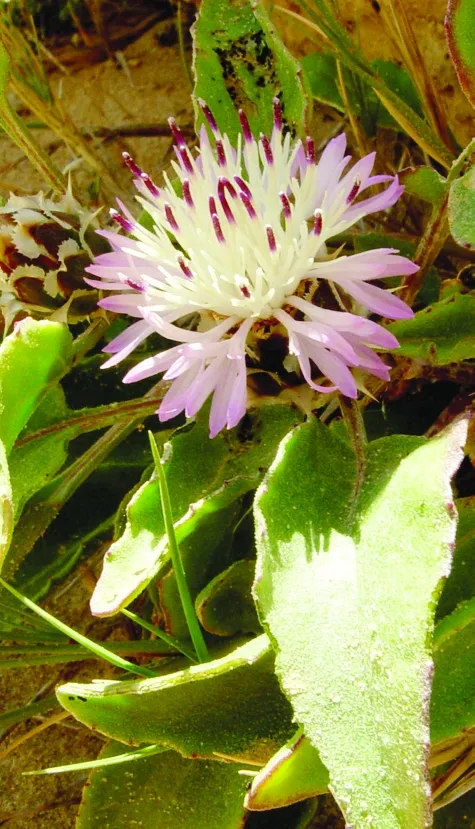Centaurea ascalonica
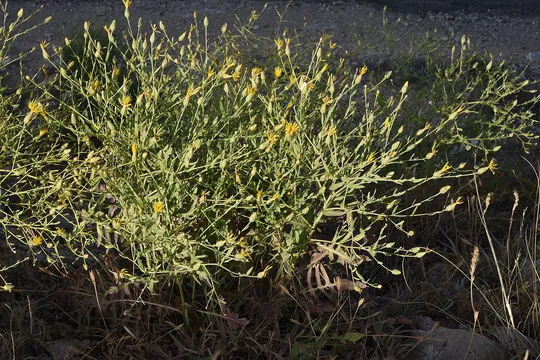
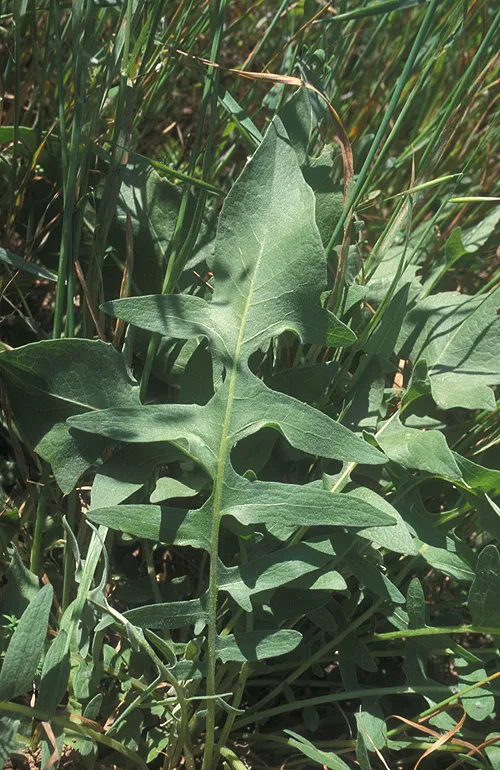
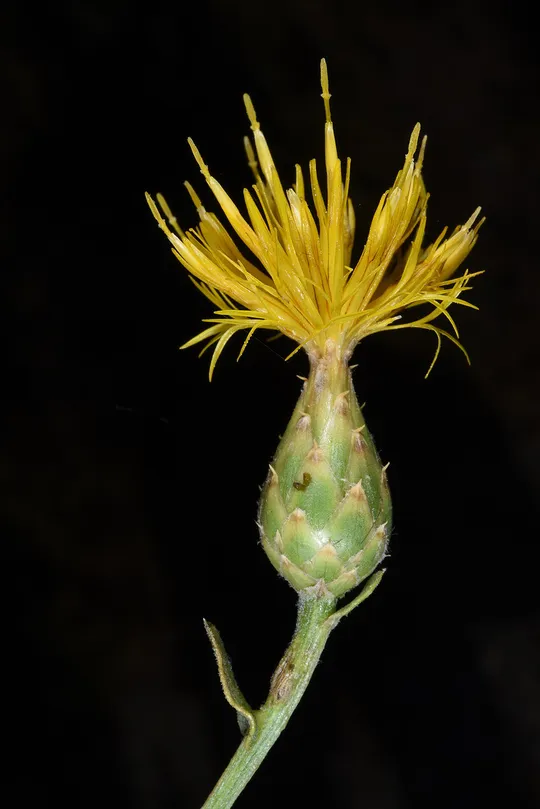
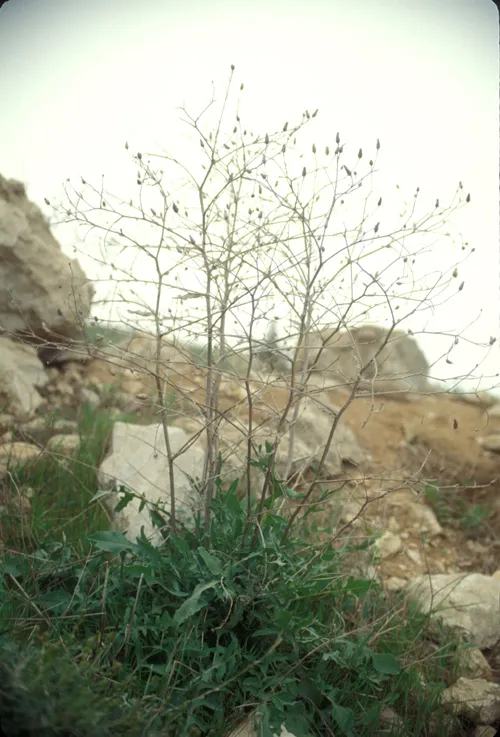
Centaurea ascalonica currently grows in the transition
zone in four regions: in Samaria, in the southern Judean Mountains, in the northern Negev and in the Philistian
Plain. Formerly it grew in the Gaza Strip, where it was collected only in 1929 and was not found since (Parse, pers. comm.). In the Judean Mountains, it
was found in two distant sections: the Ma'on Ridge and
Mount Amasa section, and north of Sha’ar HaGay in the Jerusalem Hills. The population that was found in Bet
HaKerem in 1951 is already extinct. In the northern Negev it
is found in three sections: in the Arad Valley area, in the Lahav-Bet Kama Nature
Reserve and in the Fura-Tel Keshet Nature Reserve. The Arad Valley, Tel
Krayot and the
Bet Yatir-Mount Amasa area have the largest (12)
number of sites as well as being the best protected from development and intensive
agriculture. Nine sites were recorded in the Lahav section and three sites were recorded in the Fura Ruins section
(Tel Keshet and
Bet Kama). In
Philistia, the plant is known today from the vicinity of Sa’ad and from
near Nitsanim, but is extinct from the area of the Plugot Junction and south of it. The plant was first described from Ashkelon, but currently does not grow there. In the Samarian transition zone, it is very rare, and has been found so
far only in Kokhav HaShahar and east of the village of Taybe. In the Flora
Palaestina there is data from the Upper
Galilee (probably above Rosh Pina), Samaria and from the Philistian Plain.
Centaurea ascalonica grows in two habitats: loess fields and
in transition zone shrubland on rocky limestone slopes. The species was
described from the Ashkelon vicinity on sandy soil, but actually, the plant is rare on such
soil. In the Flora Palaestina it is noted from habitats of
fallow fields. In conclusion: the
species grows in diverse habitats in the transition zone.
Centaurea is a
large genus, which includes 600 species, mainly found in the Northern
Hemisphere. It is divided into many sections with numerous species, which should be given
the status of independent
genera.
C. ascalonica is included in the Microlopos Section, which is characterized by tumbleweeds with multiple
flower heads
(capitula), decurrent leaves, winged once dry, and with involucral bracts lacking a transparent membrane
that end in a single small thorn. This section includes three species in Israel,
which are extremely difficult to tell apart: C. behen, C. rigida
and C. ascalonica. C. behen grows in the transition zone in northern Israel from Kiryat Shmona, the slopes of Mount
Cna'an, Mount Cna'an, and Mount Yavne’el and down to the Gilboa. Characterized by
decurrent stem leaves and a small
to insignificant thorn at the edge of the involucral bracts. In contrast, C. ascalonica grows from the area of the Alon Road southward to
the Arad
Valley and west to Ashkelon. These are probably vicarious
species which replace each other geographically. A problem arises because there is a third species in Israel – C. rigida, which
is very similar to C. ascalonica and there are transition forms
between the
species (Feinbrun-Dothan, 1978). C.
rigida has upper leaves that are
not decurrent and a long thorn in the involucral bracts. Its distribution overlaps that of C. behen and particularly that of C. ascalonica. If both these species would be combined, the taxon would no longer be endemic (as C. rigida is a widely distributed species in the Middle
East), and the species would be removed from the red plants list.
·
Centaurea
ascalonica is currently known from
29 sites in four regions. It is extinct
in two other geographically extreme regions (Gaza and Upper Galilee).
·
The populations from the Gaza
Strip, the Ashkelon area and Jerusalem are extinct,
probably as a result of development.
·
The
two populations from
the Alon Road to the Ma'on Ridge are very disjunct, probably (in our
opinion) because
of the densely populated area
between Jerusalem and Bethlehem.
·
C. ascalonica
is protected in
the Lahav, Fura Ruins, Ruhama, and Mount Amasa reserves.
Two populations
should be delineated, one in Nitsana, from where the species was described, and the
other in the Lahav Nature Reserve or in the Arad Valley. The
populations should be subject to long-term bi-seasonal monitoring.
Centaurea ascalonica is a sub-endemic species in Israel. It also grows in Moab, in Jordan, e.g., on the slopes of
Mount Nebo.
Centaurea ascalonica
is a perennial tumbleweed that
is characteristic of the transition zone. It is endemic to Israel and the Moab region in
Jordan. Therefore, in spite of the relatively large populations that are
known today, it is a plant that has
a high conservation priority. Its
status as a red species will
be cancelled if it will be taxonomically combined C. rigida, but it will still be a
candidate as a red sub-species.
Current Occupancy Map
| 1000 squre meter pixel | 5000 squre meter pixel | 10000 squre meter pixel | |
|---|---|---|---|
| number of observations | 0 | 0 | 0 |
| in total pixels | 0 | 0 | 0 |
| Family | Asteraceae |
| Classification | On the endangered species list |
| Ecosystem | Semi-Steppe Belt |
| Chorotype | Endemic (Eastern Mediterranean) |
| Conservation Site | Northern Lahav Nature Reserve |
| Rarity |
1
2
6
|
|---|---|
| Vulnerability |
0
3
4
|
| Attractiveness |
0
0
4
|
| Endemism |
0
3
4
|
| Red number |
1
4.2
10
|
| Peripherality | 0 |
| IUCN category | DD EW EX LC CR EN VU NT |
| Threat Definition according to the red book | Endangered |
 Based on:
Based on:
